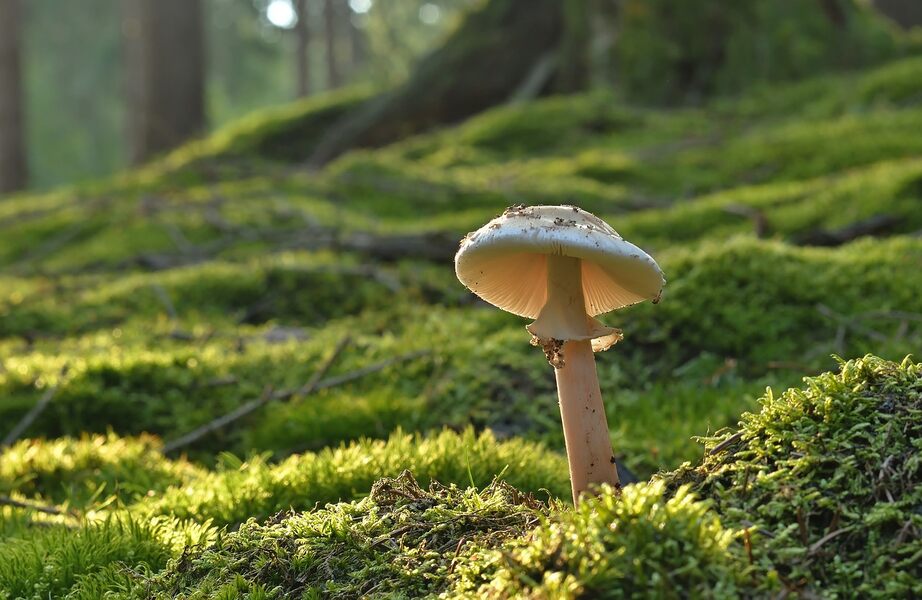
Contents
- 1 12 Healthy Home Plants for Healthy Living
- 2
- 3 2.Parlor Palm
- 4
- 5 Indoor Plants for the Living Room
- 6
- 7 4.Philodendron
- 8
- 9 Indoor Plants for the Living Room
- 10
- 11 6. Spider Plant
- 12
- 13 7. String of Pearls
- 14
- 15 8. Orchid
- 16
- 17 9. Peace Lily
- 18
- 19 10. Asparagus Fern
- 20
- 21 Indoor Plants for the Living Room
- 22
- 23 12. Calathea Ornata
- 24
- 25 Conclusion
12 Healthy Home Plants for Healthy Living
Have you ever thought of adding some indoor plants for the living room to your home? They not only add color but are also great for improving air quality and removing toxins. What’s more, research has shown that indoor plants for the living room can reduce psychological stress and have numerous health benefits.
The only problem is there are many plants with different needs and benefits, which can make choosing the right one for your home a little difficult. But no need to worry, we are here to help! In today’s video, we will share 12 healthy houseplants for a healthy lifestyle.
Believe it or not, you don’t have to be an experienced Indoor Plants for the Living Room guardian to keep the best houseplants happy and healthy. Here, we’ve compiled information on low-light indoor plants for the living room like pothos and ZZ plants.
There are also drought-tolerant varieties, such as snake plants or aloe vera, perfect if you tend to forget to water your Indoor plants for the living room. Hoping for a little luck? We’ve also included a few feng shui trees – hint: the money tree is meant to bring good luck.
To help you pick your next houseplant, you’ll notice that we’ve noted each species’ water and sunlight needs, as well as whether the plant is toxic to cats and dogs.

Indoor plants for the living room
1.Aloe Vera
A healing aloe vera plant is a beautiful addition to your kitchen windowsill, as it thrives in a bright spot. It grows very well in a sunny position and does not require frequent watering; this makes it perfect for new plant parents.
Watering: Once every two weeks, once the soil is dry
Sunlight: Bright, indirect light
How to Care for Aloe Vera Plants
That being said, a potted aloe vera indoor plants for the living room should be fed a diluted 10-40-10 liquid houseplant fertilizer. Fertilize at least once a year to maintain foliage and plant health. Apply the diluted solution directly to the roots once a year.
Indoor plants for the living room aloe vera plants do not require any fertilization.
Benefits of Aloe Vera
- Aloe vera’s laxative properties help cleanse the stomach.
- It may also help lower blood pressure.
- (Changed “lowers” to “may help lower” for a more balanced tone)
- It may help normalize blood cholesterol and sugar levels. (Changed “Helps” to “may help” for the same reason)
- Aloe vera helps remove harmful substances from the body.
- It heals various skin diseases and wounds.

2.Parlor Palm
Parlor palms like moisture, so you may want to mist the leaves frequently. However, watering every one to two weeks should be sufficient.
Watering: Every one to two weeks
How to Take Care of Parlor Palm Trees
Make sure the compost is evenly moist but not wet, and allow any excess drainage to escape. Misting twice a week can help prevent dryness.

Indoor Plants for the Living Room
3.Fiddle Leaf Fig
Arguably one of the most popular indoor plants, the fiddle leaf fig is known for its large, broad leaves. We’ll admit they’re pricey, but they can make a statement in your home and, with proper care, will bring years of enjoyment.
Watering: Every 7 to 10 days Sunlight: Bright light, direct or indirect
How to Take Care of Fig Trees
Give your fig tree a warm and sunny spot; it likes to soak up the sun. Keep the soil moist – check regularly in summer, less often in winter.
Benefits and Nutritional Value of Eating Figs
Antioxidant figs act as a natural shield in the body against free radicals. Controlling blood sugar is very important to keep the blood sugar level right.

4.Philodendron
One of the most popular indoor plants for the living room year after year, green philodendrons are low-maintenance, fast-growing, and perfect for beginners.
What are the Benefits of Philodendron Plants?
A NASA study found that indoor plants for the living room are effective at air-purifying and removing toxins from the air, meaning they improve your environment, your health, and create a nicer place to live.
What are the Disadvantages of Philodendron?
A primary disadvantage of philodendrons is their toxicity. They contain calcium oxalate crystals that can be harmful if ingested by pets or humans, causing irritation and other symptoms.
Which is the Easiest Philodendron to Grow?
Heartleaf philodendrons feature fast-growing, heart-shaped leaves that appear bronze, then quickly turn a glossy green.
How Many Types of Philodendron Are There?
There are approximately 450 species of philodendrons, which

Indoor Plants for the Living Room
5. Chinese Evergreen
Also known as Aglaonema, Chinese Evergreen is a great choice for a hassle-free indoor plants for the living room if you follow the right growing conditions. It needs watering every 5 to 10 days (check for moist soil) and low to bright indirect sunlight to stay healthy. You can find varieties with green leaves decorated with dark stripes ranging from silver to red.
Light:
- Indoor plants for the living room provide low to bright indirect sunlight.
- Varieties with dark green leaves tolerate lower light, while lighter or variegated varieties need brighter light to maintain color and patterns.
Care:
- Aglaonema plants thrive in a well-lit area near a window with west or east exposure. Bright indirect sunlight is ideal, but avoid placing your Chinese evergreens in full sun on a south-facing window, as this can burn the leaves.
Fertilizing:
- The best time to fertilize indoor plants is early spring before new growth begins. This can start as early as April, depending on your region and specific plants. Be cautious when fertilizing later in the summer when the weather is dry.

6. Spider Plant
What’s better than a spider plant? Multiple spider plants! Fast-growing shoots produce small “babies” that you can repot for added greenery elsewhere. Native to South Africa, the spider plant is an easy-going houseplant ideal for beginners. Just place it in a well-lit spot and water it weekly.
Water:
- Once every week
Light:
- Bright to moderate indirect sunlight
Benefits:
- Spider plants absorb carbon dioxide from their surroundings and release more oxygen.

7. String of Pearls
Bring the beauty of these unusual indoor plants for the living room, and you won’t be disappointed. Keep it happy with a watering schedule of every two to three weeks – slightly moist soil is ideal. Aim for a few hours of bright, indirect sunlight each day. It can also benefit from a few hours of direct sunlight in the morning if the sun isn’t too strong.
Watering:
- Every two to three weeks
Light:
- A few hours of bright, indirect sunlight with some tolerance for direct morning sun.

8. Orchid
Orchid refers to the orchid family (Orchidaceae), known for their colorful, fragrant flowers. They are one of the largest flowering plant families, with 21,950 to 26,049 recognized species.
Care:
- Don’t overwater them (once a week is sufficient) and provide bright, indirect light. Orchids are especially popular for offices!
Watering:
- Once every week
Light:
- Bright, indirect light

9. Peace Lily
Peace lilies (Spathiphyllum) are a genus of about 47 flowering plant species native to tropical Americas and Southeast Asia.
Light:
- Provide sufficient light for blooms. They tolerate low light but may flower less frequently.
Meaning:
- The white flowers symbolize peace, understanding, and compassion.

10. Asparagus Fern
Asparagus fern (Asparagus setaceus) can thrive in bright areas or even low-light corners. Keep the soil moist for this full, feathery plant.
Indoor plants for living rooms some poisonous species are valued for their delicate and attractive foliage. Florist’s fern (A. setaceus) is not a true fern and has branching feathery sprays that are often used in corsages and other Indoor plants for living room plant arrangements.

Indoor Plants for the Living Room
11. Pothos
Pothos (Epipremnum aureum) is a Southeast Asian climbing plant in the arum family. It’s a popular houseplant known for its leathery or waxy, heart-shaped green leaves, sometimes with yellow or white variegation.
Types of Pothos
There are around 15 different pothos species globally. While all pothos are toxic, they remain popular houseplants. Golden pothos (Epipremnum aureum) and Epipremnum pinnatum are probably the most common and well-known varieties kept indoors.
Benefits of Pothos
One of the main benefits of pothos is its air-purifying ability. It naturally filters out harmful toxins like formaldehyde, benzene, and xylene, making it an excellent choice for improving indoor air quality. This means it not only looks great but can also improve your health and well-being.
What Kind of Plant is Pothos?
Pothos is a hardy, vining plant in the Araceae (arum) family, native to Southeast Asia.
Disadvantages of Pothos
A downside to this houseplant is that all parts of pothos are toxic (though not fatal) to humans and pets.

12. Calathea Ornata
Calathea ornata features long, dark green leaves with a diagonal pattern of pink stripes and maroon undersides.
Care
While many people find it challenging to keep prayer plants healthy and thriving, the secret is simple: provide indirect sunlight, consistently moist and well-aerated potting mix, and high humidity.
- Avoid placing it in a south-facing window, which receives direct sunlight.
- You can create your own orchid soil mix using equal parts bark, potting soil, moss, and perlite.
- Water the plant when the top layer of soil dries slightly, and ensure any excess water drains from the potting tray.
- Use rainwater or filtered tap water to avoid chlorine.
- Keep your prayer plant away from drafts and use a humidifier or mist it daily to maintain high humidity.
We only ship healthy Calathea ornata plants grown in containers.
We carefully remove the soil and wrap the roots in damp, sterile coconut coir. The root ball is then gently packed into a plastic bag. We wrap the plant in special paper and ship it in a sturdy cardboard box using your preferred shipping option.
Difficulty
Like all calatheas, Calathea ornata can be a bit tricky to care for. Here are the main requirements:
- Light: Provide plenty of bright, indirect light.
- Watering: Water regularly to keep the soil slightly moist but not soggy.
Light Requirements
Calatheas thrive in moderate, indirect sunlight but can also tolerate lower light levels. Avoid bright, direct sunlight, which can fade the leaves and potentially burn them with prolonged exposure.

Conclusion
This guide has discussed the qualities of 12 houseplants suitable for living rooms. I hope this feedback is helpful!



Comments (2)
Top 10 worst foods for heart health - Help in Heresays:
August 11, 2024 at 6:00 am[…] The body responds to this by triggering alertness hormones such as adrenaline, noradrenaline, and cortisol. These hormones trigger other responses in the body, including difficulty sleeping. […]
Best Exercises for Longevity 2024says:
October 26, 2024 at 7:07 am[…] Of all the studies mentioned about exercise and longevity, you may have noticed that they all mention regular exercise. It means making it a habit. If you need some guidance on creating a routine that includes fitness, Matt suggests sticking to what the Centers for Disease Control and Prevention recommends: 150 minutes of moderate-intensity physical activity and two days of strength training. […]